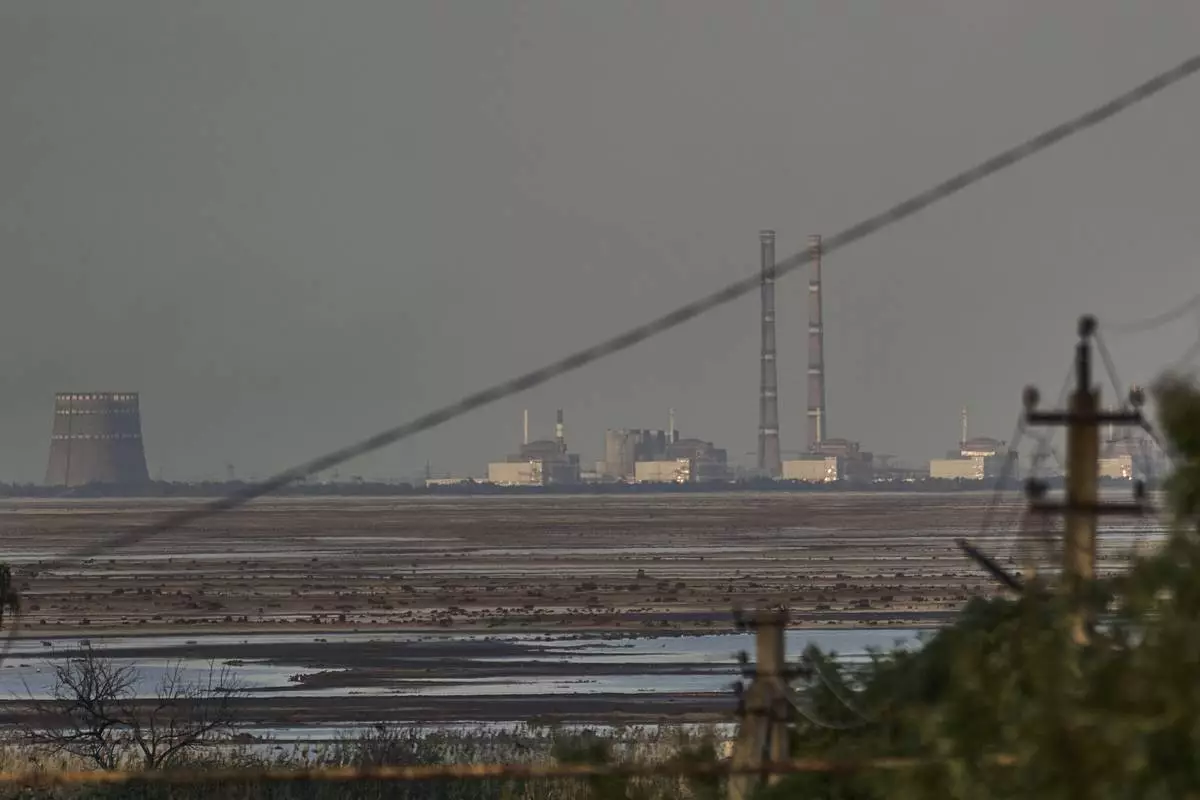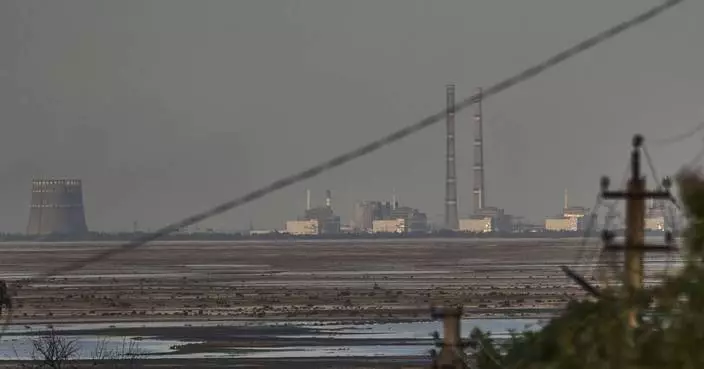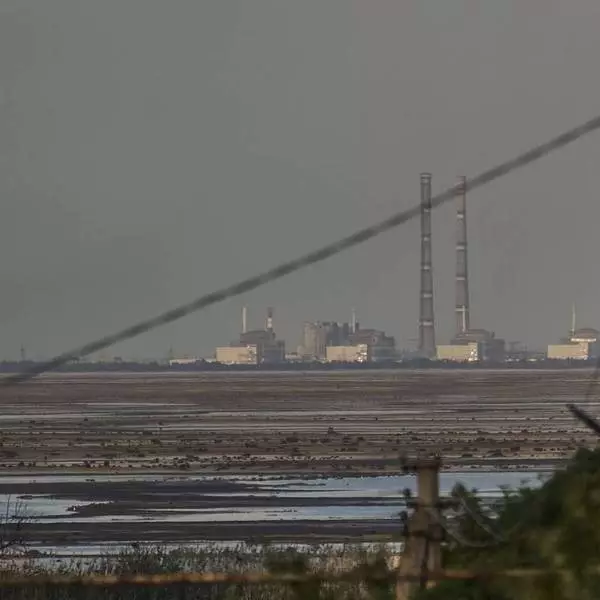NASA's asteroid-chasing spacecraft swung by Earth on Friday on its way to a space rock.
Launched a year ago, Osiris-Rex passed within 10,711 miles (17,237 kilometers) of the home planet early Friday afternoon — above Antarctica. It used Earth's gravity as a slingshot to put it on a path toward the asteroid Bennu.

This illustration provided by NASA depicts the OSIRIS-REx spacecraft at the asteroid Bennu. The rocky remnant from the dawn of the solar system may hold clues to the origins of life. On Friday, Sept. 22, 2017, the probe will use Earth's gravity to put it on a path toward Bennu. (Conceptual Image Lab/Goddard Space Flight Center/NASA via AP)
Osiris-Rex should reach the small, roundish asteroid next year and, in 2020, collect some of its gravel for return to Earth. If all goes well, scientists should get the samples in 2023.
Friday's flyby was a quick hello: The spacecraft zoomed by at about 19,000 mph (31,000 kph). NASA took precautions to ensure Osiris-Rex — about the size of an SUV — did not slam into any satellites.
"Congratulations @OSIRISREx team on a successful Earth Gravity Assist - trajectory is absolutely perfect - right up the middle!" the University of Arizona's Dante Lauretta, chief scientist for Osiris-Rex, said via Twitter.
Ground telescopes tried to observe the spacecraft while it's in the neighborhood. NASA posted a picture gallery online.
NASA said the spacecraft's science instruments would be turned on four hours after the closest approach and tested over the next two weeks, scanning the Earth and moon. Lauretta said it would be good practice for operations at Bennu.
Bennu is just 1,640 feet (500 meters) or so across and circles the sun in an orbit slightly wider than ours. Osiris-Rex will go into orbit around the asteroid and seek the best spot for grabbing a few handfuls of the bite-size bits of rock. It will hover like a hummingbird as a mechanical arm briefly rests on the surface and sucks in samples stirred up by nitrogen gas thrusters.

This illustration provided by NASA depicts the OSIRIS-REx spacecraft and the Earth. On Friday, Sept. 22, 2017, the probe will use Earth's gravity to put it on a path toward the asteroid Bennu. (Conceptual Image Lab/Goddard Space Flight Center/NASA via AP)
Scientists say the ancient asteroid could hold clues to the origin of life. It's believed to have formed 4.5 billion years ago, a remnant of the solar system's building blocks.
This is the first U.S. attempt to bring back samples from an asteroid. Japan already has visited an asteroid and returned some specks.
Story Details
UNITED NATIONS (AP) — Russia and Ukraine on Monday traded blame before the United Nations Security Council for the attacks on Europe’s largest nuclear power plant, which the head of the International Atomic Energy Agency said have put the world “dangerously close to a nuclear accident.”
Without attributing blame, IAEA Director General Rafael Mariano Grossi said his agency has been able to confirm three attacks against the Zaporizhzhia Nuclear Power Plant since April 7.
“These reckless attacks must cease immediately,” he told the Security Council. “Though, fortunately, they have not led to a radiological incident this time, they significantly increase the risk … where nuclear safety is already compromised.”
The remote-controlled nature of the drones that have attacked the plant means that it is impossible to definitively determine who launched them, Grossi told reporters after the meeting.
“In order to say something like that, we must have proof,” he said. “These attacks have been performed with a multitude of drones.”
Zaporizhzhia sits in Russian-controlled territory in southeastern Ukraine and has six nuclear reactors.
Fears of a nuclear catastrophe have been at the forefront since Russian troops occupied the plant shortly after invading in February 2022. Continued fighting between Russian and Ukrainian forces — as well as the tense supply situation at the plant — have raised the specter of a disaster.
Ukraine and its allies on Monday again blamed Russia for dangers at the site, with the United States saying, “Russia does not care about these risks.”
“If it did, it would not continue to forcibly control the plant,” U.S. deputy ambassador Robert Wood told the Security Council, which met at the initiative of the U.S. and Slovenia.
Russia, for its part, said Ukraine was to blame for the attacks.
“The IAEA’s report does not pinpoint which side is behind the attacks,” Russia’s U.N. Ambassador Vassily Nebenzia said. “We know full well who it is.”
“Over the last few months, such attacks not only resumed,” Nebenzia said, “they significantly intensified.”
Ukraine’s ambassador to the U.N., Sergiy Kyslytsya, called the attacks “a well-planned false flag operation by the Russian Federation,” which he alleged Russia had designed to distract the world from its invasion of its neighbor.
The Zaporizhzhia facility is one of the 10 biggest nuclear plants in the world. Fighting in the southern part of Ukraine where it is located has raised the specter of a potential nuclear disaster like the one at Chernobyl in 1986, where a reactor exploded and blew deadly radiation across a vast area.
Neither Russia nor Ukraine in recent months has been able to make significant advances along the 1,000-kilometer (620-mile) front line crossing eastern and southern Ukraine. Drones, artillery and missiles have featured heavily in what has become a war of attrition.
Russia and Ukraine have frequently traded accusations over the Zaporizhzhia plant.
The most recent strikes did not compromise the facility, which is designed to withstand a commercial airliner crashing into it, the IAEA said.
The plant’s six reactors have been shut down for months, but it still needs power and qualified staff to operate crucial cooling systems and other safety features.

FILE - The Zaporizhzhia nuclear power plant, Europe's largest, is seen in the background of the shallow Kakhovka Reservoir after the dam collapse, in Energodar, Russian-occupied Ukraine, Tuesday, June 27, 2023. Officials at the Russian-controlled Zaporizhzhia Nuclear Power Plant said that the site was attacked Sunday April 7, 2024, by Ukrainian military drones, including a strike on the dome of the plant’s sixth power unit. (AP Photo/Libkos, File)

IAEA warns that attacks on a nuclear plant in Russian-controlled Ukraine put the world at risk

IAEA warns that attacks on a nuclear plant in Russian-controlled Ukraine put the world at risk








